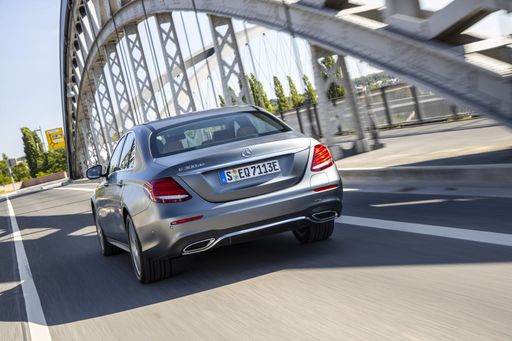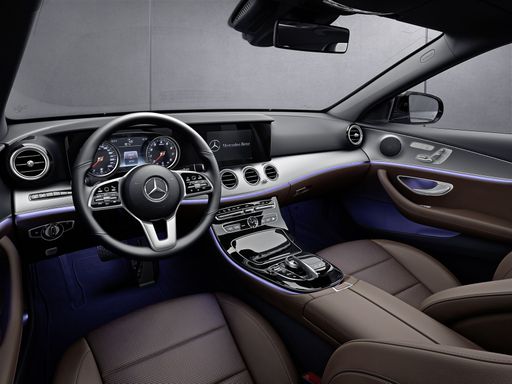Mercedes E Class vs Hyundai IONIQ 9 – Which one offers the better deal?
Compare performance, boot capacity, efficiency and price at a glance.
Find out which car is the better choice for you – Mercedes E Class or Hyundai IONIQ 9?
Costs and Efficiency: Looking at overall running costs, both models reveal some interesting differences in everyday economy.
Mercedes E Class has a a bit advantage in terms of price – it starts at 50500 £, while the Hyundai IONIQ 9 costs 58700 £. That’s a price difference of around 8224 £.
As for range, the Hyundai IONIQ 9 performs significantly better – achieving up to 620 km, about 504 km more than the Mercedes E Class.
Engine and Performance: Power, torque and acceleration are the classic benchmarks for car enthusiasts – and here, some clear differences start to show.
When it comes to engine power, the Mercedes E Class has a clearly perceptible edge – offering 585 HP compared to 428 HP. That’s roughly 157 HP more horsepower.
In acceleration from 0 to 100 km/h, the Mercedes E Class is evident quicker – completing the sprint in 4 s, while the Hyundai IONIQ 9 takes 5.20 s. That’s about 1.20 s faster.
In terms of top speed, the Mercedes E Class performs somewhat better – reaching 250 km/h, while the Hyundai IONIQ 9 tops out at 200 km/h. The difference is around 50 km/h.
There’s also a difference in torque: Mercedes E Class pulls slight stronger with 750 Nm compared to 700 Nm. That’s about 50 Nm difference.
Space and Everyday Use: Beyond pure performance, interior space and usability matter most in daily life. This is where you see which car is more practical and versatile.
Seats: Hyundai IONIQ 9 offers noticeable more seating capacity – 7 vs 5.
In curb weight, Mercedes E Class is clearly lighter – 1810 kg compared to 2594 kg. The difference is around 784 kg.
In terms of boot space, the Mercedes E Class offers clearly perceptible more room – 540 L compared to 338 L. That’s a difference of about 202 L.
When it comes to payload, Hyundai IONIQ 9 minimal takes the win – 643 kg compared to 640 kg. That’s a difference of about 3 kg.
Who wins the race?
The Mercedes E Class proves to be only a minor advantage and therefore becomes our DriveDuel Champion!
Mercedes E Class is the better all-rounder in this comparison.

Mercedes E Class
Mercedes E Class
The Mercedes-Benz E-Class Saloon epitomises sophistication and innovation, offering a seamless blend of elegant design and cutting-edge technology. Its refined interior ensures exceptional comfort, making every journey a luxurious experience. The driving dynamics are impressively balanced, providing both agility and smoothness, perfect for both city driving and long-distance cruising.
details @ group-media.mercedes-benz.com
@ group-media.mercedes-benz.com
 @ group-media.mercedes-benz.com
@ group-media.mercedes-benz.com
 @ group-media.mercedes-benz.com
@ group-media.mercedes-benz.com
Hyundai IONIQ 9
The Hyundai IONIQ 9 is a bold step forward in the automotive world, combining cutting-edge electric technology with a sleek and modern design. This model stands out with its spacious interior and advanced features, ensuring both comfort and convenience for drivers and passengers alike. As Hyundai pushes the envelope in eco-friendly innovation, the IONIQ 9 represents the future of sustainable driving with its impressive range and performance capabilities.
details

|
|
|
|
|
Costs and Consumption |
|
|---|---|
|
Price
50500 - 119700 £
|
Price
58700 - 74400 £
|
|
Consumption L/100km
1.5 - 7.5 L
|
Consumption L/100km
-
|
|
Consumption kWh/100km
-
|
Consumption kWh/100km
19.9 - 20.6 kWh
|
|
Electric Range
101 - 116 km
|
Electric Range
600 - 620 km
|
|
Battery Capacity
21.20 kWh
|
Battery Capacity
110 kWh
|
|
co2
39 - 172 g/km
|
co2
0 g/km
|
|
Fuel tank capacity
50 - 66 L
|
Fuel tank capacity
-
|
Dimensions and Body |
|
|---|---|
|
Body Type
Sedan
|
Body Type
SUV
|
|
Seats
5
|
Seats
7
|
|
Doors
4
|
Doors
5
|
|
Curb weight
1810 - 2390 kg
|
Curb weight
2594 - 2689 kg
|
|
Trunk capacity
370 - 540 L
|
Trunk capacity
338 L
|
|
Length
4949 - 4959 mm
|
Length
5060 mm
|
|
Width
1880 mm
|
Width
1980 mm
|
|
Height
1468 - 1480 mm
|
Height
1790 mm
|
|
Max trunk capacity
-
|
Max trunk capacity
2419 L
|
|
Payload
530 - 640 kg
|
Payload
586 - 643 kg
|
Engine and Performance |
|
|---|---|
|
Engine Type
Petrol MHEV, Plugin Hybrid, Diesel MHEV
|
Engine Type
Electric
|
|
Transmission
Automatic
|
Transmission
Automatic
|
|
Transmission Detail
Automatic Gearbox
|
Transmission Detail
Reduction Gearbox
|
|
Drive Type
Rear-Wheel Drive, All-Wheel Drive
|
Drive Type
Rear-Wheel Drive, All-Wheel Drive
|
|
Power HP
186 - 585 HP
|
Power HP
218 - 428 HP
|
|
Acceleration 0-100km/h
4 - 8.5 s
|
Acceleration 0-100km/h
5.2 - 9.4 s
|
|
Max Speed
222 - 250 km/h
|
Max Speed
190 - 200 km/h
|
|
Torque
320 - 750 Nm
|
Torque
350 - 700 Nm
|
|
Number of Cylinders
4 - 6
|
Number of Cylinders
-
|
|
Power kW
137 - 430 kW
|
Power kW
160 - 315 kW
|
|
Engine capacity
1993 - 2999 cm3
|
Engine capacity
-
|
General |
|
|---|---|
|
Model Year
2024 - 2025
|
Model Year
2025
|
|
CO2 Efficiency Class
E, F, B, D
|
CO2 Efficiency Class
A
|
|
Brand
Mercedes-Benz
|
Brand
Hyundai
|
Is the Mercedes E Class offered with different drivetrains?
The Mercedes E Class is offered with Rear-Wheel Drive or All-Wheel Drive.
The prices and data displayed are estimates based on German list prices and may vary by country. This information is not legally binding.
